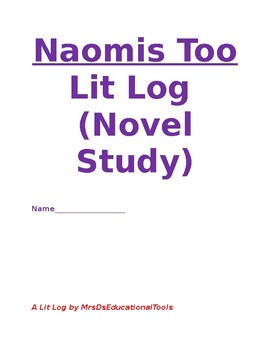Naomis Too Lit Log (Novel Study)
- Word Document File
Description
This lit log (novel study) is for the realistic fiction, Naomis Too (by Olugbemisola Rhuday-Perkovich and Audrey Vernick) about a blended, biracial family.
Themes in this novel include:
- blended, biracial family
- racism
- self identity
- talking about feelings
- diversity
- middle school issues
- friendships
- marriage and divorce
- social justice
- community involvement
Naomis Too is a sequel to Two Naomis. However, it could be read without reading Two Naomis.
The key focus skills of the lit log (novel study) are:
* use text to explain, draw inferences, cite textual evidence
* determine theme, central idea, summarize
* describe, compare/contrast, analyze characters, setting, events
* describe, explain, analyze points of view
This lit log (novel study) can be used for a guide as a read aloud (in a classroom or in a small counseling/social skills group) or for direct reading instruction (guided reading, novel study, literature group).
Reading level of text: 4th-5th grade
Interest level of text: 4th-7th grade
I hope this lit log (novel study) helps provide meaningful discussions.
“Mrs. D”





